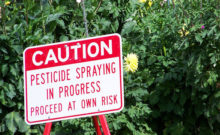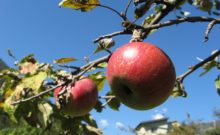Endosulfan Endosulfan has been one of the most frequently used pesticides on fruit to date. It is mostly found on apples, as well as various kinds of vegetables. Endosulfan residues can also still remain on the fruit, even after washing. Exposure to high-levels of endosulfan can bring health risks such as headaches, nausea, vomiting, and seizures. Low-dose exposure can bring possible harm to unborn children such as birth defects or even autism. Young children show a particular susceptibility to the pesticide as the chemicals interfere with their still-developing bodies and nervous systems. Permethrin Permethrin is the second in this list of types of pesticides and is widely used in agricultural production. Yet there has been some debate over the potential health risks to humans of this pesticide. The EPA, also known as the Environmental Protection Agency, ruled permethrin to be a carcinogenic, which means a cause of cancer, through oral exposure. This conclusion was reached after a study on rats. Many scientists believe this is not solid enough evidence of its effect on humans, which is widely believed to be benign. The chemical’s effect on animals and wildlife is agreed to be harmful. Diazinon Diazinon is used the most on stone fruits, as well as almonds. This pesticide is not believed to cause a significant health risk when consumed through food. Exposure to diazinon residue through diet was ruled by the EPA to not surpass their level of concern. This means that it is a mostly benign chemical. However, direct exposure to diazinon through the skin or the mouth is said to carry serious health risks. It will overstimulate the nervous system and cause nausea, dizziness and even paralysis or death through very high exposures. Malathion Like each of these types of pesticides, malathion is used to repel insects and mosquitoes away from fruit and vegetables during their production. As with permethrin, this chemical was shown to be a carcinogenic to animals during a conducted lab study. The EPA ruled it as not a cause for concern for humans, however. This means that the residues of malathion found on your fruits and vegetables are generally safe and will not cause any serious damage to your health. Chlorpyrifos The final pesticide in this list is chlorpyrifos. Unlike the previous few, this chemical has been found to have potential health effects that are rather serious. Commonly used on corn, almonds, bananas, oranges, and apples, chlorpyrifos has been linked to lung cancer among those who were exposed to it through their diet. It can interfere with the mental development of young children and contribute to personality disorders like ADHD. It is more harmful to boys than girls. The hazards of these five types of pesticide clearly vary, from generally benign to potentially serious. It is important for you to remain educated about what kind of pesticides are on your fruits and vegetables and what you can do to counteract their possible effects.
Top 5 Types of Pesticides Sitting On Your Fruits and Vegetables Right Now
Pesticides are used on a wide variety of fruits and vegetables during their harvesting and production. Naturally, many consumers are greatly concerned about these pesticides and what potential risks they bring to your health. Here are five types of pesticides that are commonly used on fruits and vegetables and what you should know about their health risks.
Tags:
Your thoughts here
Leave a Reply





Impressive!Thanks for the post
WOnderful work here.I like the way you explain things.PS.I’m gonna have to share this post!
You did great work here.You know what?Liked your writing style.
Good stuff here.Blogging can be very overwhelming for a lot of people because there is so much involved but it’s like anything else.Everything takes time and we all gave the same amount of hours in a day so put them to good use.We all have to start somewhere and you are on the right track.Thanks for this!